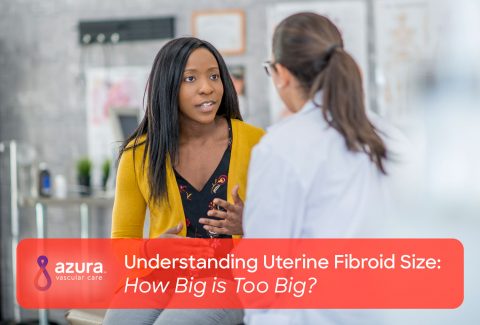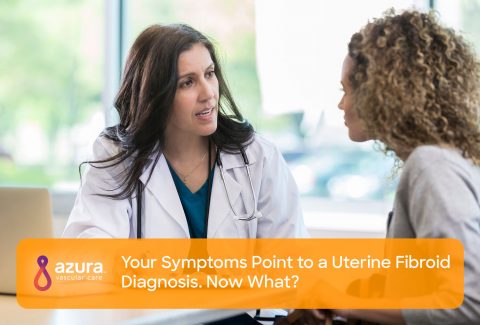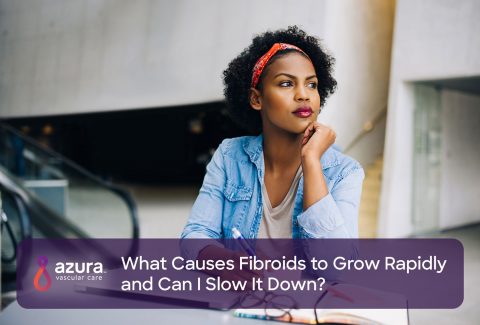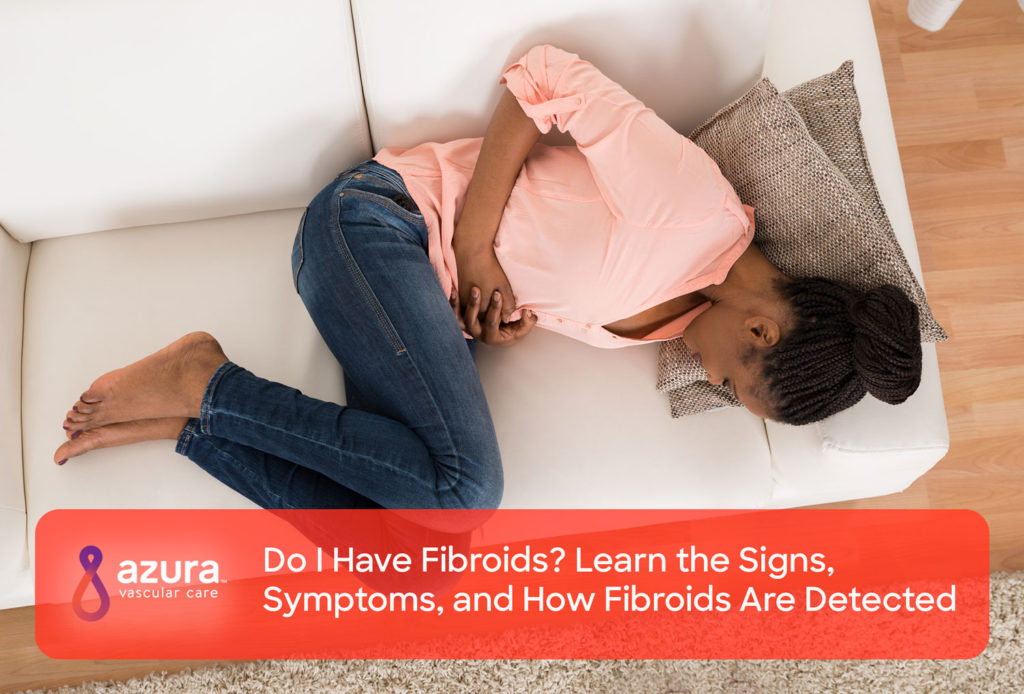
Some women are painfully aware that they have uterine fibroids, while others may not experience any symptoms related to the condition. If you are experiencing pelvic pain, heavy menstrual bleeding, constipation, miscarriages, (i) and an urge to urinate frequently or urgently, you may be wondering, “Do I have fibroids?”
Uterine Fibroids May Be More Common than You Think
What are uterine fibroids? Also called leiomyomas or myomas, fibroids in the uterus are the most common noncancerous tumor of the female reproductive system. (i) They are composed of muscle and fibrous tissue, and are most common in women in their 40s and early 50s, (ii) as well as women who are overweight. (i) By age 45, about 70 percent of women develop at least one fibroid. (i)
Fibroids may be microscopic or grow as large as a basketball. They can grow in the wall of the uterus, under the inside layer of the uterus, or under the outer surface of the uterus. Those that grow in the wall or just under the endometrium can change the shape of the inside of the uterus.
High levels of the female hormones estrogen and possibly progesterone are thought to stimulate fibroid growth. Fibroids may become larger during pregnancy, when hormone levels increase, and tend to shrink after menopause, when hormone levels trail off. They cause pain when they grow too large and can’t get enough blood, causing them to deteriorate.
Women often have more than one fibroid, and very rarely, they can become cancerous. In fact, fewer than 1 percent of fibroids become cancerous. (i)
What Are the Symptoms of Fibroids?
As stated earlier, not all women with fibroids experience symptoms. While many fibroids cause no symptoms, about one-fourth of white women and one-half of black women eventually develop symptomatic fibroids. (i)
Uterine fibroid symptoms for those who have them include: (i, ii)
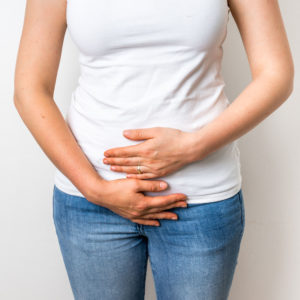
- Heavy bleeding (which can cause anemia)
- Painful periods
- Feeling of fullness in the lower stomach
- Enlargement of the lower abdomen
- Frequent urination
- Discomfort near rectum
- Constipation
- Pain during sex
- Lower back pain
- Complications during pregnancy and labor, including a six-time greater risk of needing a cesarean section
- Reproductive problems, such as infertility, which is very rare
The type and severity of your symptoms depend on the number of fibroids you have, their size and their location in the uterus. In addition, fibroids that don’t cause any symptoms before pregnancy may lead to complications during pregnancy, including miscarriage, preterm labor, abnormal positioning of the baby before delivery, and excessive blood loss after delivery. (i)
How Are Fibroids Detected?
Your doctor may detect fibroids during your annual pelvic exam. He or she may feel a lump or mass on the uterus and may order imaging tests to confirm that you have fibroids:
- Ultrasound uses sound waves to produce the image. An ultrasound probe can be placed on the abdomen or inside the vagina to capture images of existing fibroids
- Magnetic resonance imaging (MRI) uses magnets and radio waves to produce the image
- X-rays use a form of radiation to see into the body and produce an image
- Computed tomography (CAT or CT scan) takes many X-rays from different angles for a more complete image
- Hysterosalpingogram (HSG) involves injecting X-ray dye into the uterus and taking images
- Sonohysterogram involves injecting fluid into the uterus and taking ultrasound images
If you’ve had any bleeding other than during your menstrual period, your doctor may want to rule out cancer of the uterus. He or she may order any of the following:
- Pap test
- Biopsy of the uterine lining
- Transvaginal ultrasound, sonohysterogram, hysteroscopy, or a combination
Treatment Options if You Have Fibroids
If you do have fibroids and are non-symptomatic, you may not require any treatment. If you are experiencing symptomatic fibroids, there is good news regarding uterine fibroid treatment options. Several procedures are available today including uterine fibroid embolization, a non-surgical approach that is performed by an interventional radiologist. When considering uterine fibroid treatments, be sure to speak with your doctor to help you understand the risks and benefits of each type of uterine fibroid procedure.
Uterine fibroid embolization, or UFE, is an alternative to hysterectomy or other surgical procedures for uterine fibroids. UFE is a minimally invasive procedure that safely and effectively shrinks uterine fibroid tumors and provides relief from the unpleasant symptoms that come with them. UFE, because it is minimally invasive, can be performed in an outpatient setting where you can go home the same day for a quicker recovery as compared to traditional surgery.
Learn more about this safe, effective outpatient treatment for uterine fibroids. Download our free information sheet, Understanding Uterine Fibroid Embolization, or call 844-UFE-CARE (866-2273) to schedule an appointment with a vascular specialist today.
Sources:
(i) Mutch, D. G., MD., et al. Fibroids – Women’s Health Issues – Merck Manuals Consumer Version. Retrieved June 12, 2018, from https://www.merckmanuals.com/home/women-s-health-issues/fibroids/fibroids
(ii) Uterine fibroids. (2018, March 16). Retrieved June 12, 2018, from https://www.womenshealth.gov/a-z-topics/uterine-fibroids
